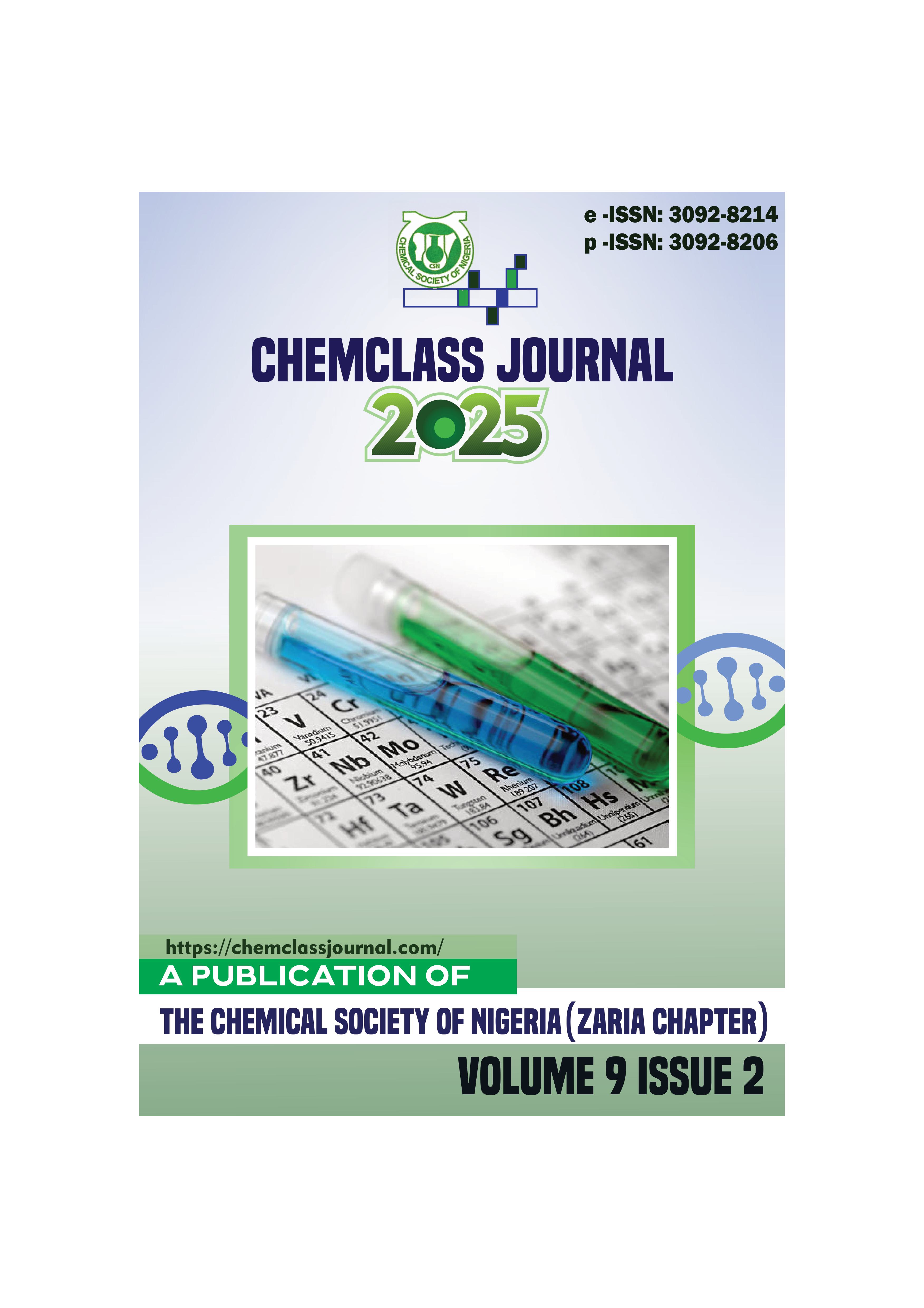Acute Toxicity, Polyphenolic Composition and Liver Protective Capabilities of the Methanol Leaf Extract of Alangium salvifolium (LIN. F) WANG (Alangiaceae)
DOI:
https://doi.org/10.33003/chemclas-2025-0902/167Keywords:
Alangium salvifolium , Carbon tetrachloride , Liver markersAbstract
Medicinal plants over the years have been explored for the prevention, management and treatment of
diverse disease conditions. Different part of the plant Alangium salvifolium has been used in folklore
medicine for the management and treatment of ulcer, microbial infection, free radical implicated disorders
among others. The study aims to investigate the oral toxicity profile and the extent of liver protection from
carbon tetrachloride-induced toxicity. The Lorke’s oral acute toxicity, polyphenolic composition as well as
the protective effect of the methanol extract on the liver enzyme markers (aspartate transaminase (AST),
alanine phosphatase (ALP), alanine transferase (ALT), glutathione (GSH), glutathione peroxidase (GPx),
catalase (CAT) and malondialdehyde (MDA)) in carbon tetrachloride (CCl4) intoxicated rats model, was
evaluated using standard procedures. The results showed a marked reduction in the serum activities of AST,
ALP, ALT, and MDA with an attendant increase in the levels of GSH, GPx and CAT when compared to
the induction control animal group. The 221.38 mgGAE/g and 131.56 mgQE/g for the total phenolic and
total flavonoid contents respectively could be responsible for the 62.70% free radical scavenging activity
as well as the hepatoprotective effect of the plant extract reported. There was no mortality after 24 hr oral
administration of the extract at the highest investigated concentration of 4 g/kg p.o and a further 14 days of
observation. In conclusion, the present findings suggest that A. salvifolium can offer some degree of hepatic
protection from chemicals-induced toxicity in experimental animals.





 ChemClass Journal
ChemClass Journal
